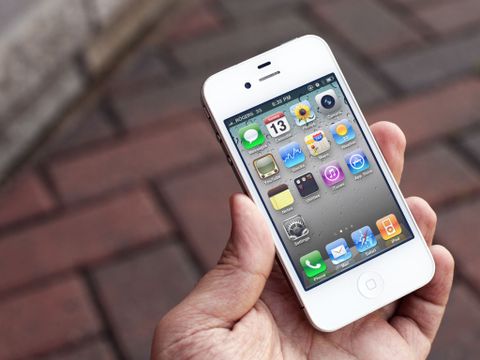This isn't a review of a color. It's a review of the ramifications of a color -- the white iPhone 4's 10 month delay, what caused it, whether or not those causes should be of any concern to potential buyers, and how competitive a device first introduced back in June 2010 can be in today's market.
Since we're going to focus primarily on what's different here, anyone interested in a more general look at the device should check out our original AT&T/GSM iPhone 4 review first, and our follow up Verizon iPhone 4 review if you're considering that network.
Once you're done, read on for the white addenda.
So what took so long?
The white iPhone 4 was announced back at WWDC 2010 -- held aloft by Steve Jobs during his keynote no less. And then... nothing. Or rather, delays. First in July:
White models of Apple's new iPhone 4 have continued to be more challenging to manufacture than we originally expected, and as a result they will not be available until later this year. The availability of the more popular iPhone 4 black models is not affected.
Then again in October
We're sorry to disappoint customers waiting for the white iPhone yet again, but we've decided to delay its release until this Spring.
Rumors blamed the delay on the color itself; that it resulted in light leaks, proximity sensor malfunctions (worse even then the black iPhone 4), camera trouble, consistency issues, and more. Apple SVP of Marketing, Phil Schiller offered a very general explanation last week.
"It was challenging. It's not as simple as making something white. There's a lot more that goes into both the material science of it–how it holds up over time…but also in how it all works with the sensors. We thought we were there a year ago, or less than that, when we launched the iPhone 4, and we weren't."Schiller said that it turned out there were a lot of unexpected interactions between the color of the device and various internal components. Also, like fair-skinned humans, white iPhones need a little more UV protection from the sun.
So challenging, in fact, Apple only made the launch official one day in advance, finally releasing the white iPhone 4 on April 29, 2011.
Hardware
The result of the delays is that the white iPhone 4 hits the market some 10 months after the black iPhone 4. And that means where the iPhone 4 hardware, with its retina display, external stainless steel antenna band, double sided glass were state-of-the-art of smartphones, now faces competition that's had almost a year to catchup... or move ahead.
First, a look at the April 2011 white iPhone 4 beside the June 2010 black iPhone 4.
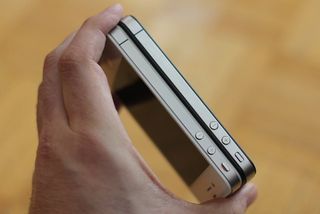
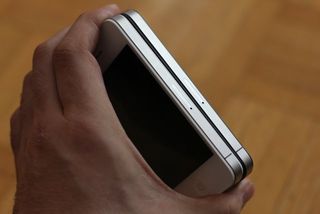
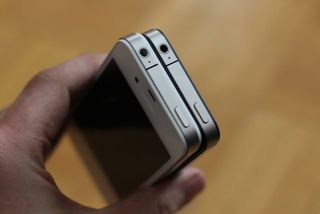

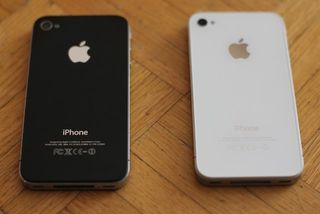
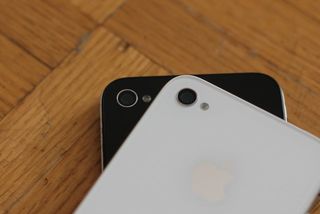
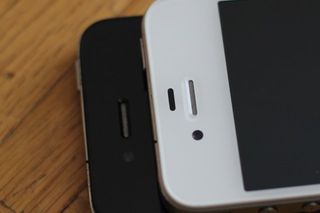


Getting white right
The white iPhone 4 looks good. It looks like an iPhone 4 but not exactly like an iPhone 4 rendered white. There's the noticeable difference with the proximity sensor (we'll get to that later) but there's a qualitative difference about the white glass overall as well. Where the black iPhone 4 looks like its made of black glass, the white iPhone 4 looks like its coated in white glass. It's a subtle difference but it's noticeable around the edges. It could be something to do with achieving opacity with the white color, a UV coating made necessary to protect the color, or something that's just more apparent with the white iPhone 4, it's there.
It's consistent though. The white iPhone 4 is uniformly white, the same shade of white, from back to front, and from plate to home button. Apple nailed it.
In terms of shade, it looks remarkably similar to the white iPad 2. That should come as no surprise since Steve Jobs said in the above-linked interview that getting the white iPhone 4 right benefitted the rest of the Apple product line, including the iPad 2.
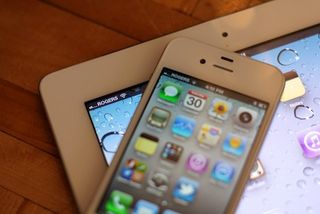

The shade does look subtly different than the 2009 iPhone 3GS, however. The iPhone 3GS had a plastic rather than glass blacking, and kept the black rather than white front plate.
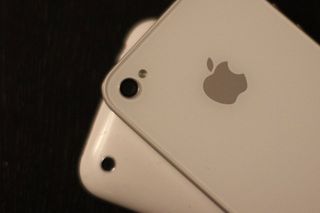

And I like it, and so do many people who thought they wouldn't but have now seen it in person. Given none of what we'll cover below is a deal-breaker for you, whether you go white or black will be a matter of personal preference.
Competitive landscape
When Apple introduced the 960x640 IPS LED retina display, with pixels so small they arguably disappeared and allowed the viewer to forget they were looking at bitmaps, there was nothing else like it. As far as Blackberry, HP/Palm, Windows Phone and Nokia are concerned, there still isn't. It's almost as though time has stood still. Android is another story. Since June Google's OEM partners have kept pace... almost. They're now releasing slightly skinnier but just as good looking 960x540 qHD (quarter 1080p) screens.
When it comes to overall build quality, however, very little else has come close. Nokia's ability to churn out pure metal phones like the Nokia N8 is one of the few exceptions. HP/Palm, RIM, and Windows and Android devices from HTC, Samsung, Motorola (with their fine Corellian freighter inspired design aesthetic), etc. have eschewed glass and steel and stuck with plastic. They're beautifully crafted, mostly sturdy affairs but they're closer to Hasbro in the hand than the singular solidity of the iPhone 4.
Android is kicking apps when it comes to processors, however. While the white iPhone 4 uses the April 2011 released ARM Cortex A8-based Apple A4 processor, several Android devices have now been released -- or are about to be released with dual core ARM Cortex A9-based processors. (iPad 2 has matched that with the dual core Apple A5 System-on-a-Chip but that probably won't be coming to the iPhone until this fall.)
Cameras are another area where the competition have been keeping up the pressure. Nokia has always had great lenses but now Android and Windows Phone devices are entering the megapixel war, and LG has even gone so far as to introduce a 3D camera (and screen to go with it!). Luckily megapixels aren't everything and the sheer size and quality of the iPhone 4's rear camera has kept its place as one of the best shooters in mobile. (More on that later.)
Several other hardware innovations have also made their way into the market since the original iPhone 4 launch, including Near Field Communications (NFC) in the Google/Samsung Nexus S. It's fairly useless for average consumers at the moment but could be important in the future, allowing payments to be made via your phone the same way they're currently made via a credit card. (Apple might also match this with iPhone 5 in the fall.)
LTE 4G, roughly Wi-Fi speeds come to mobile, is probably the biggest if you're on Verizon in one of their LTE markets, or a few international cities. Battery life isn't great yet and coverage is terrible, but if you have it in your area and you're not adverse to plugging in your phone a lot, Android devices like the HTC Thunderbolt will blow your hair back. (Apple probably won't be matching this until iPhone 6 in 2012.)
All this to say that, except for a few specific technologies, the white iPhone 4 released today, while not the revelation of the black iPhone 4 released last June, is still competitive with the latest and greatest from Android and more than competitive with everyone else.
And yes, that's a little crazy.
Proximity sensor
The iPhone 4 proximity sensor has been a challenge for Apple, with iOS 4.1 addressing it with a bug fix but problems persisting for many users. The white iPhone 4 was rumored to have more trouble, the color interfering to the degree Apple initially had a series of perforations over the sensor, an almost silver-looking grid. The release version has switched that for a black patch, presumably to allow even better sensing.

My black iPhone 4 has misfired on several occasions, muting calls while I was on them. But I've had that phone for months. I've only been able to test the white iPhone 4 a few days now and haven't had any problems with it, but will update this section if and when I do.
Camera
Another rumor surrounding the white iPhone 4 delay concerned light leakage with the camera and LED flash. If that was the case with prototypes, there's no evidence of it in the release model. Pictures taken with the 5mp camera look just as good as those taken with the black iPhone 4. Here are some example, the first three with HDR, the second 3 with the LED flash.





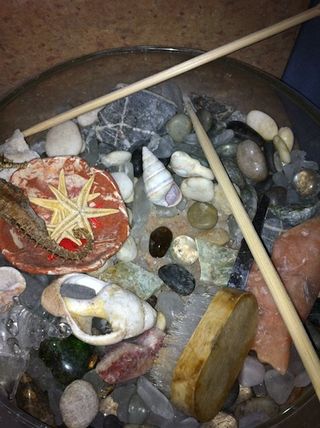
Accessory compatibility
With the exception of cases, all existing iPhone 4 accessories -- cables, chargers, headsets, and Bluetooth, should work the same with the new white iPhone 4 as they did with the previously released black iPhone 4.
However, the white iPhone 4 -- at least the first batch released so far -- seem to be 0.2mm thicker than the black iPhone 4. Because of that ever-so-slight difference in thickness, you'll need to pay special attention to cases. In our tests, cases that were the least little bit roomy on the black iPhone 4 fit perfectly on the white iPhone 4 while cases that were snug on the black iPhone 4 were a little tight on the white iPhone 4. This won't impact stickers or film protectors, bumpers or pouches, silicone or leather cases, but could impact molded plastic skin cases.
- Top 5 cases to show off your white iPhone 4 [sponsored]
- Top 10 accessories for your iPhone 4
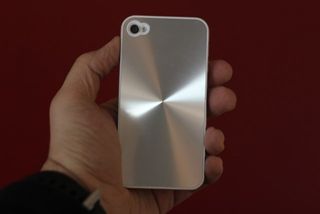

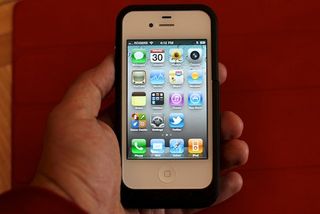
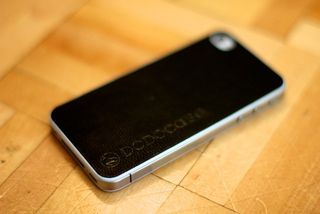
Software
The white iPhone 4 shipped with iOS 4.3.1 (AT&T/GSM) or iOS 4.2.6 (Verizon). Since Apple installed, boxed, and shipped them, iOS 4.3.2 and iOS 4.2.7 have come out and iTunes will prompt you to update the first time you plug it in.
- iOS 4.3 update walkthough
- iOS 4 software walkthrough
But the real story here is that Apple released 3 feature updates to the current iOS version since the original iPhone 4 launched, and another point update between the time they shipped and sold the white iPhone 4.
Given that many competing devices, even those made by or with the platform owners themselves, wait weeks or months for any update, or simply never get them, this is notable. Heck, it's astounding. (It took a disappointing amount of time for Google to update my Nexus One -- a device they have complete control over -- to the latest Gingerbread OS, and it seems like my Palm Pre Plus will not be getting webOS 2.x).
And this extends throughout the ecosystem. Where the black iPhone 4 launched as Apple's first, and hence only, FaceTime capable device, the white iPhone 4 enters a world where iPod touch, iPad, and Mac have all been updated to support the easy, if wi-fi-only video calling standard. Again, added value and longevity.
Where every other vendor struggles or doesn't bother to release updates, or prefers you to buy a new phone, Apple's constant stream of updates, major and minor, are a revelation and add enormous value and longevity. The white iPhone 4 you get now will almost certainly be updated with iOS 5 this fall, and if history is an indicator, a year of 5.x updates after that.
App and game compatibility
Needless to say, the white iPhone 4 is an iPhone 4, and so it's fully binary compatible with pretty much every app in the app store. That means everything from Facebook to Angry Birds, Twitter to Infinity Blade, Documents to Go to Netflix will work just as you expect.
- Top 10 apps for your iPhone 4
- Top 5 apps for BlackBerry and Android switchers, and more top 5's
- iPhone apps and games forum
Conclusion
So, some 10 months later, is the white iPhone 4 worth getting?
If you don't need an iPhone now, or in the next few months, then you can consider waiting on the next-generation iPhone 5, which will likely launch this fall. It will likely have the new Apple A5 processor, like iPad 2, and perhaps other new features as well.
If you need a phone now, however, whether it's an upgrade, replacement, or first time smartphone, and the white iPhone 4 tempts you, then it's certainly worth your consideration. That the it remains not only competitive, but inarguably -- and almost shockingly --still one of the best built, best equipped smartphones on the market is a testament to Apple's attention to detail and design. If none of the very specific functions competitors offer, like LTE or 3D are must-haves for you, or if any of the iPhone 4's still industry-leading hardware and continuously updated software features are more compelling -- and if white is your preferred color -- then get this phone and you'll be happy.
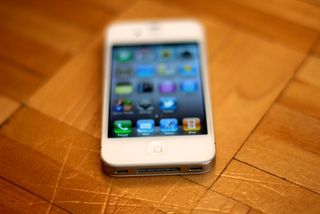

Rene Ritchie is one of the most respected Apple analysts in the business, reaching a combined audience of over 40 million readers a month. His YouTube channel, Vector, has over 90 thousand subscribers and 14 million views and his podcasts, including Debug, have been downloaded over 20 million times. He also regularly co-hosts MacBreak Weekly for the TWiT network and co-hosted CES Live! and Talk Mobile. Based in Montreal, Rene is a former director of product marketing, web developer, and graphic designer. He's authored several books and appeared on numerous television and radio segments to discuss Apple and the technology industry. When not working, he likes to cook, grapple, and spend time with his friends and family.
